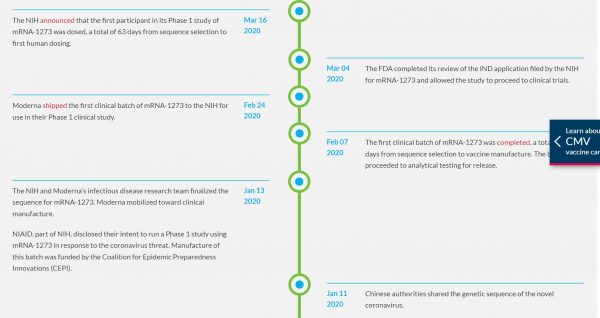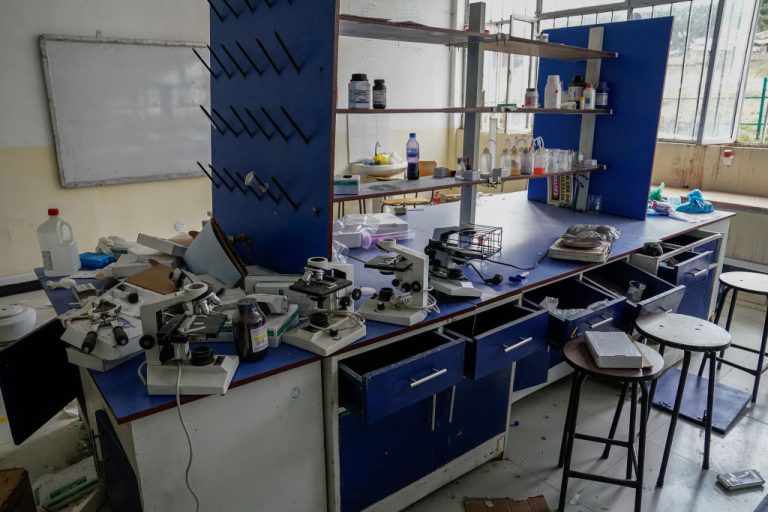News Analysis
Despite the fact that both hype and interest surrounding the Coronavirus Disease 2019 (COVID-19) pseudo pandemic has abated as measures, lockdowns, and vaccine mandates have relaxed in North American society, SARS-CoV-2, the virus that causes the disease continues to both quietly and not-so-quietly spread around the world.
What appears to have caused the lull is the Omicron variant, which was first detected in Botswana among four fully vaccinated diplomats from an unknown country in early November of 2021.
Omicron a ‘type of vaccine’?
Despite being not only very significantly more infectious than the Delta variant, but almost totally vaccine-evasive, Omicron nonetheless manifested as less symptomatic, thereby appearing to generate a semblance of natural immunity in its targets.
Omicron’s effect in this regard was so significant that individuals such as notorious globalist Bill Gates directly stated that Omicron actually “is a type of vaccine” during the Munich Security Conference in February.
Success
You are now signed up for our newsletter
Success
Check your email to complete sign up
Gates also said that Omicron “creates both B-cell and T-cell immunity, and it’s done a better job getting out to the world population than we have with vaccines.”
Gates’s supposition is in dispute among a segment of the scientific community, however, that believes all variants of SARS-CoV-2 have a unique, and dangerous, characteristic wherein infections, regardless of symptomatic severity, fatigue and deplete the human body’s T-cell immune functions.
T-Cells are employed as part of the human body’s adaptive immune system to cause cells that are already infected by a virus to undergo apoptosis (self destruction), while the “antibodies” generally referred to in the media are immunoglobulins in the blood that seek out and kill invading or proliferating viruses before they enter cells.
Detractors surmise that as a result, consecutive reinfections, regardless of symptomatic severity or any notions of herd immunity, whether natural or otherwise, are actually analogous to rolling the dice on developing severe autoimmune disorders.
Strange characteristics
When Omicron emerged, scientists noted two particularly strange characteristics. One is the spike protein, the tendril-like segment of the virus’s exterior that connects to the human body’s ACE2 receptors in order to facilitate entry into host cells, was dramatically mutated compared to Delta and all other variants.
Featuring as many as 45 independent spike mutations, Omicron was able to evade the existing mRNA gene therapy vaccines, which deliver a genetic instruction to human cells to force the synthesis of the spike protein from an early variant of SARS-CoV-2 given directly to Big Pharma by the Chinese Communist Party (CCP), because its composition is dramatically different.

The second anomaly was that despite Omicron’s drastic mutations, it appeared to have no associated lineages to previous versions of the virus, including Delta, almost as if it appeared out of thin air.
A January article on the Berkeley website aptly states, “In fact, Omicron is so different from other variants that it seems like it’s been evolving on its own for many months.”
“And that leads us to another mystery that scientists are puzzling over: where has Omicron been hiding while all this evolution was occurring?”
Unnatural evolution
In a March 25 exclusive, independent investigative journalist Sharyl Attkisson quoted a “a scientist with knowledge of the matter” as stating that when it comes to Omicron, “the least likely scenario is that this was a natural human transmission chain that created the lineage and we just failed to detect it.”
The scientist posited that Omicron came about from “serial passaging in mice” that “was done in a laboratory somewhere, and add[ed] an accidental or on purpose release on the back end.”
Notably, one of the earliest studies to reveal that Omicron reduced the efficacy of the Pfizer COVID injection by a staggering 41 fold was conducted by the Africa Health Research Institute (AHRI), located in South Africa, in December of 2021 with funding by the Bill & Melinda Gates Foundation and the NIH.
The AHRI is notable as Botswana shares a border with South Africa.
The theory is neither in the least without merit nor a “conspiracy theory.”
A December of 2021 study published in the Journal of Genetics and Genomics by researchers from the Chinese Academy of Sciences (CAS) explained succinctly that established science already understands that “viruses belonging to different orders (e.g., poliovirus, Ebola virus, and SARS-CoV-2) were found to exhibit similar molecular spectra of mutations when evolving in the same host species, while members of the same virus species exhibit divergent molecular spectra when evolving in different host species.”
Fundamentally, viruses do not have reproductive systems and do not evolve in isolation. Viruses must enter the cells of a host species, whether human or otherwise, wherein a host cell and its varying genetic structure and substances are turned into a veritable barracks that serves as a vector for viral reproduction, evolution, and extended infection.
Notably, the scientists were able to determine that Omicron’s specific mutations were lacking hallmark molecules that only emerge from an RNA virus’s mutation form when utilizing the human body as a host.
So, if Omicron’s evolutions are not characteristic of those found when SARS-CoV-2 utilizes the human body to proliferate, in what species did it evolve?
Because the gain of function research utilized to develop the virus from what was likely originally found in bats to something that has zoonotic (cross-species) transmissibility has significant downsides, COVID has, notably, long since been infecting both wild and zoo-captive animals all around the world.
Thus, the Chinese team found that Omicron’s evolutions were not only consistent with the evolutionary history of the virus when developing in mice, but that its spike protein mutations “significantly overlap” with those found in “mouse-adapted” SARS-CoV-2 manifestations.
A not-so-minor detail
At first glance, the finding may appear either insignificant or as if it is a smoke screen to distract from the Wuhan Lab Leak theory.
After all, the CAS is directly associated with the CCP’s military, the so-called “People’s Liberation Army,” and is a major arm of the Party’s notorious Military Civil Fusion project that converts many of the country’s prima facie civilian and private entities into effectively state-run enterprises.
Nonetheless, the key point is that it is difficult to experiment with SARS-type coronaviruses on mice because they, unlike humans, do not have the ACE2 receptors the family targets.
Therefore, when scientists want to run gain of function experiments on mice, they have to take the extra step of genetically engineering the rodents to express human ACE2 receptors.
This process produces what is colloquially referred to as “humanized” mice, and is a technique well established as used in Peter Daszak’s EcoHealth Alliance and the NIH’s gain of function research with the Wuhan Institute of Virology.
Two plus two
Another unnamed scientist that spoke with Atkisson pointed out, “Every lab in the world is now working on Covid. It’s highly contagious and risky even with the best controls. The odds of an accidental release are pretty high.”
He continued, “It’s very hard to attribute where these things occur, but this is an unprecedented time we’re living in” because “there are a lot of lab facilities working on the virus at the same time.”
“And so at any point, we have safety controls to try to keep the pathogens in the lab. But with so many people working under different conditions, different restrictions, different rules, the potential for lab release of some COVID related work is plausible,” he stated.
“It’s something we need to consider.”













